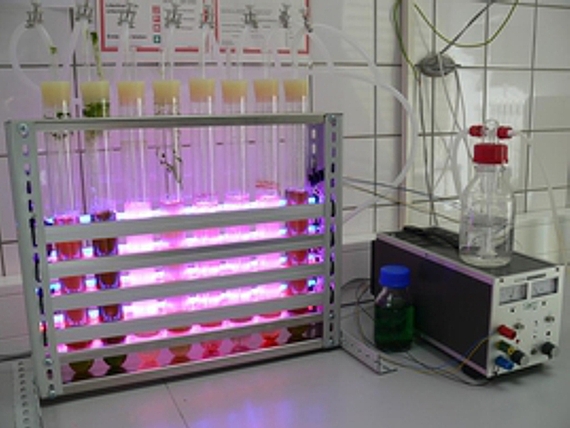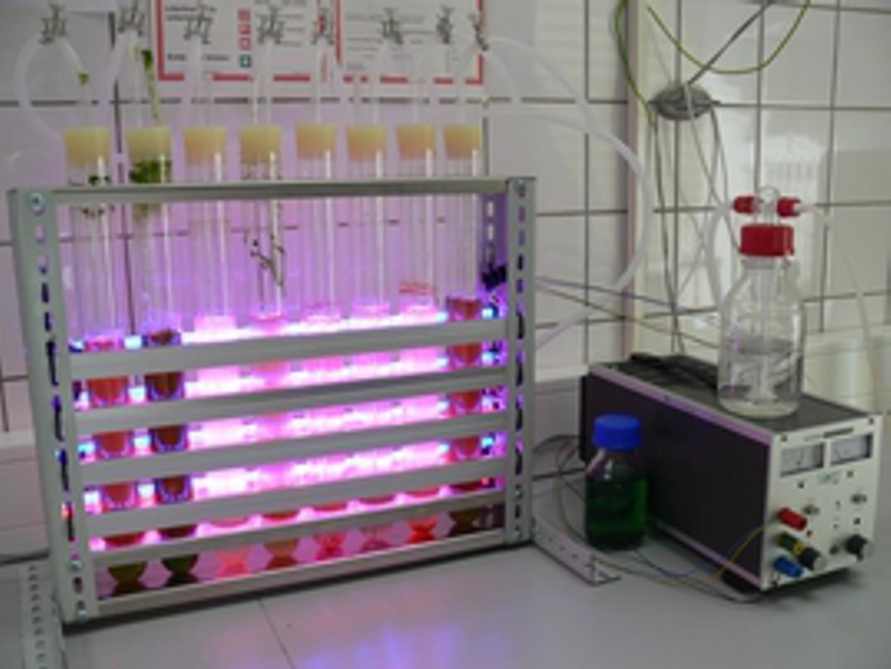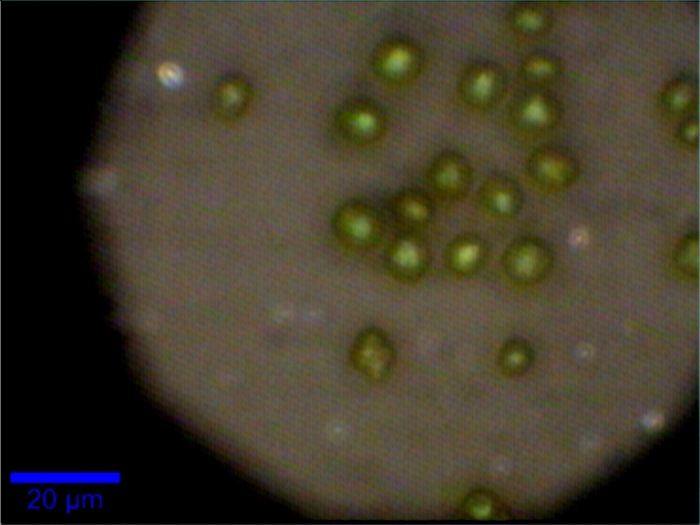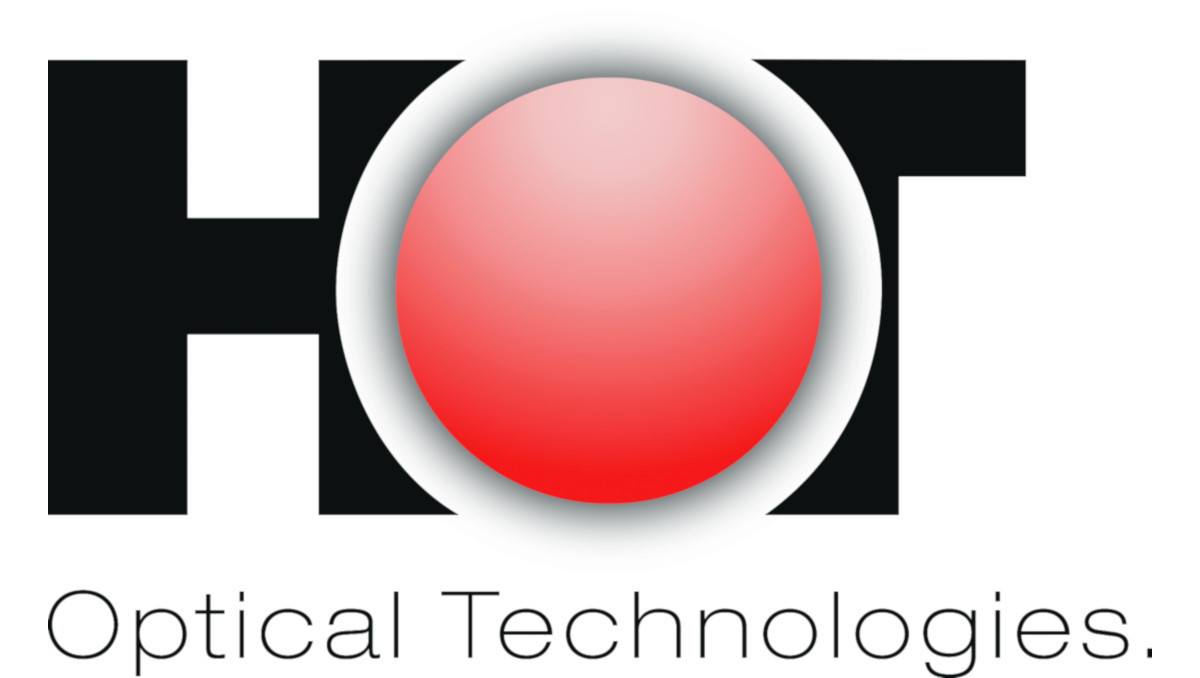





[Text en: Mikroalgen]
Why microalgae?
Microalgae are ubiquitous in the environment. They grow in fresh water or in salt water and can – depending on the species – even survive complete drought or use a saturated salt solution as water source. Like many other plant species, microalgae produce various pigments for photosynthesis and to adapt to changing light conditions (“light stress”). They are also grown industrially for example for biofuel and the production of these pigments.
Violaxanthin and zeaxanthin
Violaxanthin and zeaxanthin are two of these pigments. These carotenoids are associated with the chlorophylls and are easily convertible. Violaxanthin increases the light-harvesting of the chlorophylls, thus allowing the cells to perform photosynthesis under low light conditions, while zeaxanthin radiates excessive energy thus preventing damage to the light-harvesting complexes in intense light.
Observing the violaxanthin cycle in vivo
Microalgae are used industrially for example for the production of biofuel and pigments. The light stress of the algae cultures is an important parameter for the efficient production of these molecules in the algae and the violaxanthin cycle is a direct indicator for it. With resonance Raman spectroscopy it is possible to observe the violaxanthin cycle live without time and cost-expensive chemical analyses for the first time, thus determining the actual reaction times of the algae cultures to stress and allowing the optimization of the production parameters.
See also:
Koch, M., Zagermann, S., Kniggendorf, A.‐K., Meinhardt‐Wollweber, M., and Roth, B. (2017) Violaxanthin cycle kinetics analysed in vivo with resonance Raman spectroscopy. J. Raman Spectrosc., 48: 686–691. doi:10.1002/jrs.5102
Koch, M., Kniggendorf, A.‐K., Meinhardt‐Wollweber, M., and Roth, B.. In vivo determination of carotenoid resonance excitation profiles of Chlorella vulgaris, Haematococcus pluvialis, and Porphyridium purpureum. J Raman Spectrosc. 2018;49:404–411doi: 10.1002/jrs.5292
Your Contact


30167 Hannover


